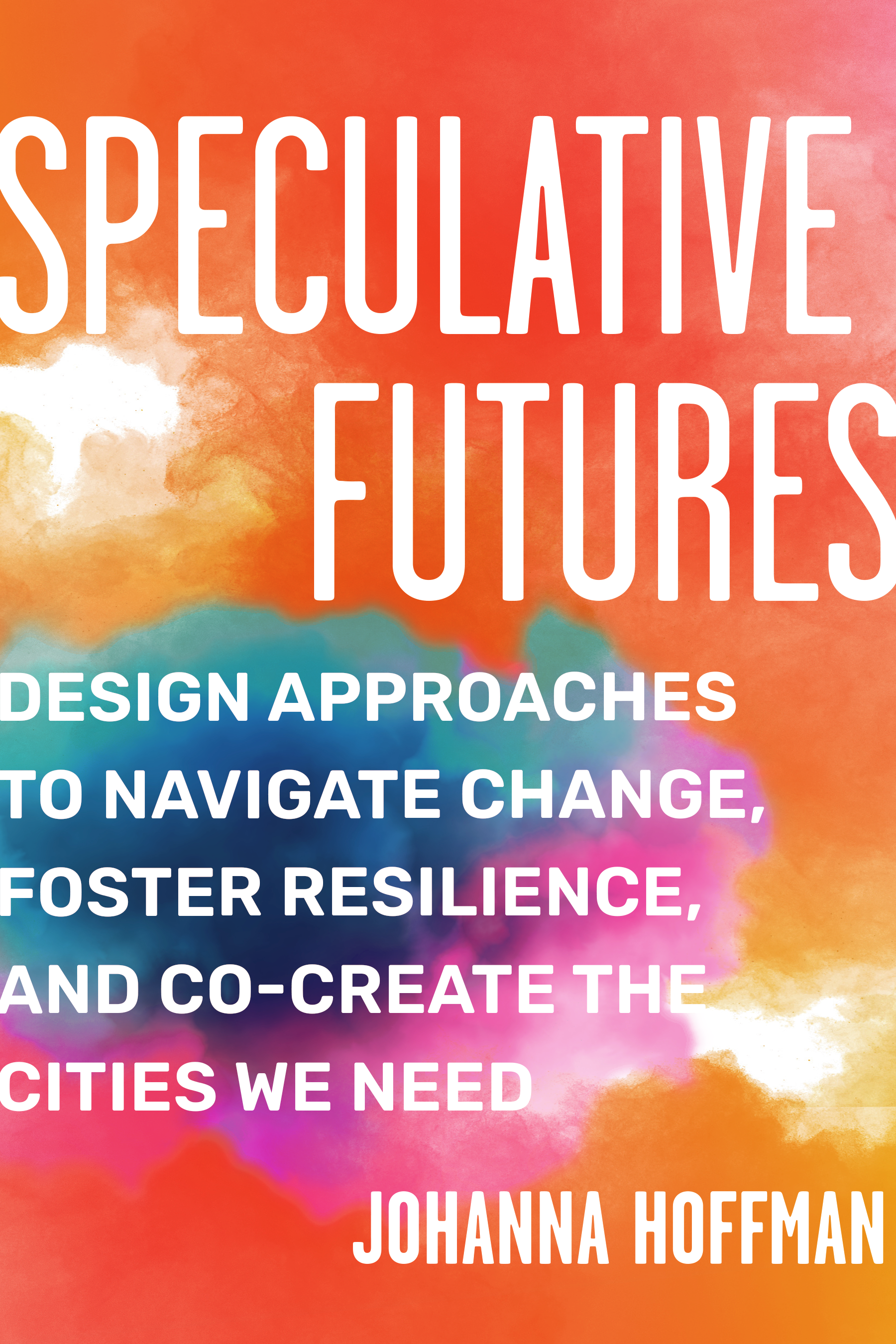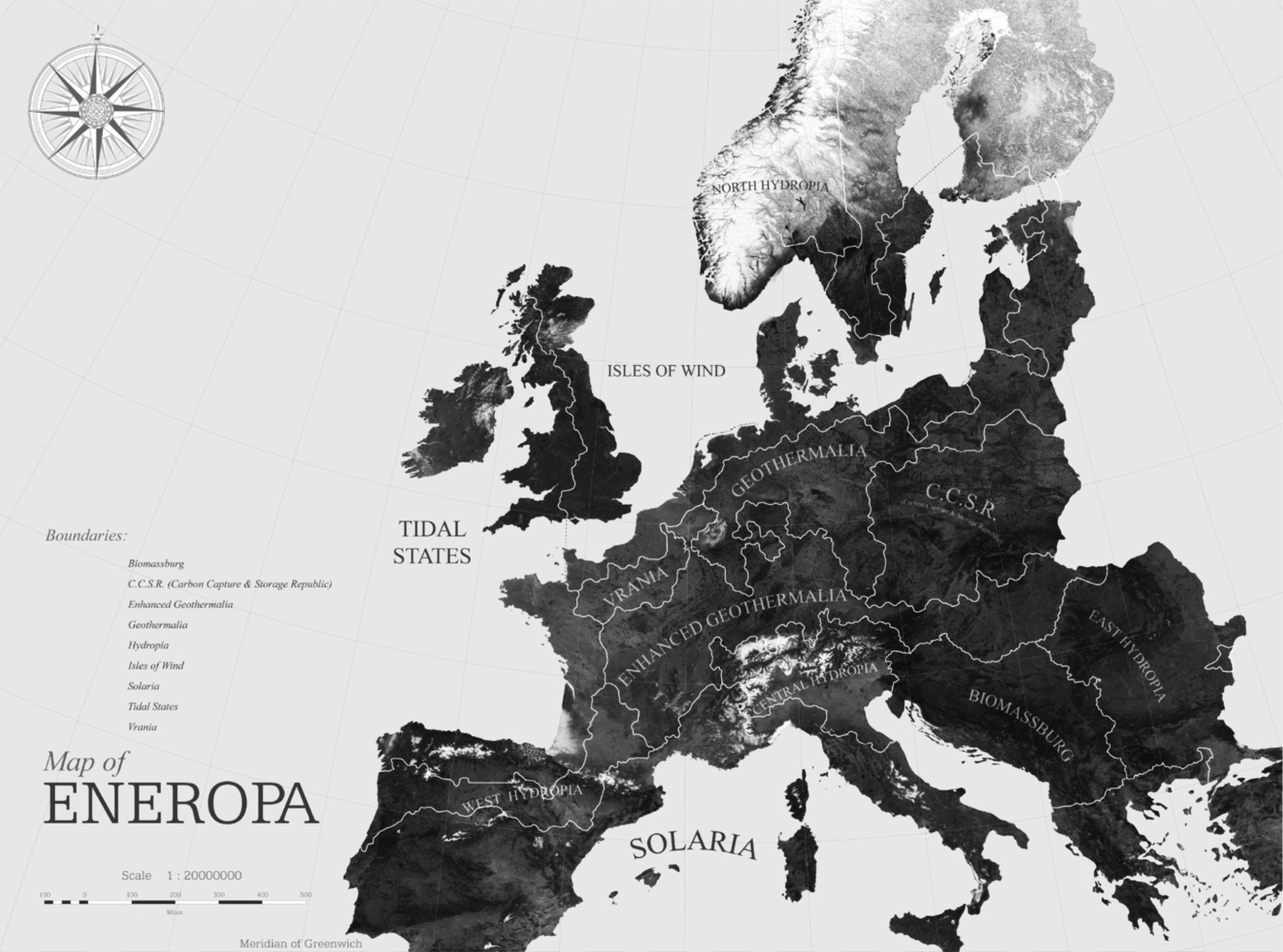Design Approaches to Navigate Change, Foster Resilience, and Co-create the Cities We Need
Speculative Futures is out in the world! It explores how this emerging field can help us imagine and build more resilient, equitable cities.
Speculative futures – design approaches that visualize new and potential worlds – move us beyond what currently exists into the realms of what could be. Long used in art, film, fiction, architecture, and industrial design, the tools employ speculation to provoke, imagine, and dream into what lies ahead. Written for futurists, strategists, urbanists, artists, and readers looking to enact city-wide transformation, the book offers creative paths toward urban resilience, using design tools that already exist.
For more information on buying the book, takeaways from the text, and diving into more design resources on speculative futures, and a how-to guide for using them, check out the previous links and following paragraphs.




Images courtesy of Karl Baumann, Roadmap 2050, Lisa Jackson, and the Canadian Film Board
The Problem
We’ve limited our imaginations of what cities can be for too long. Predictive and persuasive modes of speculation have resulted in urban spaces that perpetuate the status quo. Legacies of inequality, where exclusive development approaches fail to include the concerns of marginalized residents, are metastasizing into crises. By tying our visions of urbanism to doing things the ways they’ve been done before, we’ve locked ourselves into conditions primed for dystopian demise.
The Tools
Speculative futures are design tools to create the resilient cities this century demands. Imagining what a future might sound, smell, and taste like provides visceral connections to the impacts of potential change. The more vivid an experience of an alternative future is, the more robust our responses to it become. The stronger our responses become, the deeper our debates about preferred alternatives can go. The more we debate, the more we can identify and enact the futures that work for more of us.
Speculative futures tools help us:
- challenge the status quo
- increase individual and social resilience
- balance short-term needs with long-term change, reorienting our understanding of cities toward more adaptive capacity
- create more collaborative and equitable development by supporting cooperation over persuasion
- shift our collective imagination toward resilient possibility and cultivate more proactive planning as a result
The Takeaway
By giving us permission to imagine, speculative futures encourage a shift in attitude from “What’s the problem?” to “What’s possible?” In doing so, they question our assumptions about existing norms to see if they’re really the paradigms we want to shape what lies ahead. Connecting current moves to long-term change helps ensure that the tactics used to solve short-term problems can address the fifty- or one-hundred-year issues as well. Speculative futures offer practices that create the forward-thinking, adaptive plans that modern uncertainty requires.
Most importantly, the approaches aren’t exclusive or specialized. Using speculative futures doesn’t depend on getting a degree or buying expensive software. Anyone can employ them, because everyone has the capacity to imagine. When more people feel empowered to envision their preferred futures, they’re more equipped to advocate for their needs. More people promoting the futures they want encourages design and planning professionals to embrace the role of facilitators, to focus less on enacting their own ideas and more on coalescing diverse viewpoints into cohesive plans. In this way, speculative futures cultivates self-determination, creating cities more likely to work not just for the few, but for all.
Praise
“In order to change our cities, and the world, we need to first imagine a better future—a future we might not have imagined at all. Johanna Hoffman’s Speculative Futures is a guidebook to getting there—one that will help us move beyond the pessimism and polarization of our time, and build the better, more caring communities we need.”
—Richard Florida, author of The New Urban Crisis
“Speculative Futures is about a mindset. It is about a kind of practice for building worlds that may be our best hope for effecting meaningful global change. This is a kind of design for the generation that is now having to imagine powerfully, thoroughly, and confidently…Hoffman captures the value of approaches like design fiction, reminding us that speculative futures taps directly into our imagination—the one evolutionarily critical faculty we all have that may very well be what saves us from our current existential crisis.”
—Julian Bleecker, co-founder of Near Future Laboratory and author of Design Fictions for Asynchronous Urban Computing
“By playing with the rich, wide, and varied tapestries of possible futures, we stand a better chance of identifying the most feasible and optimal forms that can possibly exist. In this fascinating text, Johanna Hoffman provides us with a guide on how to do so. Using examples from the past and speculations from the near future, she’s created an important book for our times.”
—Michael Batty, professor of planning at University College London and author of Inventing Future Cities and The New Science of Cities
“In this remarkable book, Johanna Hoffman tells the story of city futures. This is not just the world of visioning the future city, but the gritty world of citizen meetings and foresight workshops…Hoffman’s details provide both inspiration but also an illumination of the politics of futures design. In a journey of past, present, and future, speculative futures illuminates the way.”
—Sohail Inayatullah, UNESCO Chair in Futures Studies for Sejahtera Centre for Sustainability and Humanity of International Islamic University Malaysia and Tamkang University
“There is a timely and important gift here, not only for the worlds of urban planning and architecture where she began her career, but for agents of change everywhere. Anyone who aspires to more vibrant and resilient futures at all scales should read this book, and I hope they will.”
—Stuart Candy, PhD, associate professor of design at Carnegie Mellon University
“Hoffman’s book is an invaluable primer for anyone trying to make sense of an uncertain and unstable future. Combining personal narrative with a wide breadth of research from fields from psychology to climate science and everything in between, she offers a path forward to grapple with difficult questions lit by empathy, justice, and radical hope.”
—Sara Jensen Carr, author of Topography of Wellness and assistant professor of architecture at Northeastern University